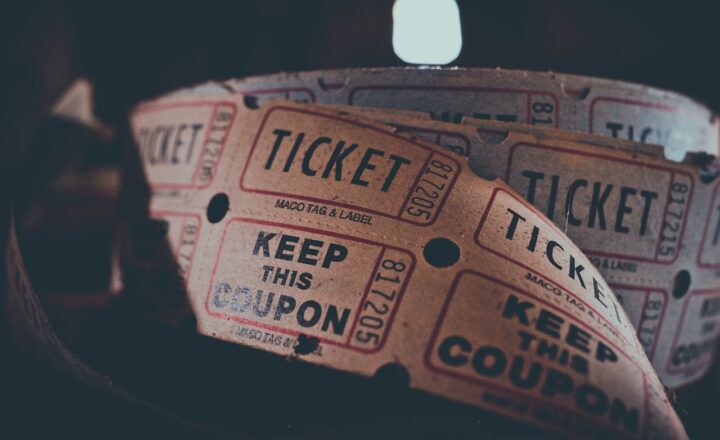The Psychological Tricks Scary Movies Use to Heighten Fear and Suspense
November 17, 2024

Scary movies have an unrivaled ability to elicit fear and suspense, leaving audiences on the edge of their seats. But what exactly makes these films so effective at chilling us to the bone? In this comprehensive analysis, we will delve into the psychological tricks that filmmakers employ to manipulate our fear responses and create an unforgettable cinematic experience.
1. The Science of Fear
To understand how scary movies work, we must first explore the science behind fear. Fear is a fundamental human emotion, hardwired into our brains for survival. When we perceive a threat, our body triggers a fight-or-flight response, releasing stress hormones like adrenaline and cortisol. This biological reaction can make our hearts race, palms sweat, and pupils dilate, all of which filmmakers strategically exploit to enhance the horror experience.
2. Manipulation of Sound
Sound design is crucial in creating a frightening atmosphere. Scary movies use a variety of auditory techniques to amplify tension:
- Sudden Loud Noises: Jump scares are often accompanied by loud, unexpected sounds that startle audiences. This orchestral ‘jump’ heightens the emotional response and engages our primal instincts.
- Dissonance and Unnatural Sounds: Filmmakers employ dissonant soundtracks—using musical instruments that clash—to create a sense of unease. Unnatural sounds, such as eerie whispers or distorted voices, can trigger our instincts to feel threatened.
- Silence as a Tool: Silence before a jump scare adds tension, making the audience anxious about what’s to come. This pause allows anticipation to build immensely before the shocking moment unfolds.
The careful blending of sound ultimately plays a significant role in how suspense is constructed and released throughout the film.
3. Visual Techniques That Haunt Us
Visual storytelling is another powerful tool in horror filmmaking. Directors use various techniques to provoke fear visually:
- Lighting: Low lighting and heavy shadows create an atmosphere of suspense. The inability to see every detail amplifies anxiety, as viewers fill in the gaps with their imaginations, often conjuring more frightening scenarios than what’s presented on screen.
- Camera Angles: Unusual camera angles create disorientation, evoking feelings of unease. For instance, low-angle shots looking up at a character can make them appear menacing, while high-angle shots looking down can render a character vulnerable.
- Close-Ups: Close-up shots of characters’ terrified expressions forge a deeper emotional connection with the audience, allowing viewers to embody the character’s fear. This establishes a shared experience of dread and anticipation.
These visual elements keep audiences captivated, gripping their attention until the very last frame.
4. Pacing and Timing
The rhythm of a horror film is critical to its effectiveness. Filmmakers utilize pacing to manipulate audience emotions:
- Building Tension: By intertwining moments of excitement with sudden slowdowns, filmmakers prolong suspense. Rapid cuts during high-action scenes keep the adrenaline flowing, whereas slower scenes that develop character can make the audience anxious about impending doom.
- Foreshadowing: Subtle clues are strategically placed throughout the film to forewarn viewers of potential threats. They may seem insignificant at first but create an underlying tension when combined with the pacing of the film.
- Crescendo Moments: The climax of horror films is often defined by a series of rapid, climactic events, followed by a sudden resolution. This contrast heightens the feelings of fear, euphoria, or relief as the adrenaline rush fades, making it a rollercoaster for emotions.
The ebb and flow of pacing maintain viewer engagement and often dictate when fear levels rise and fall.
5. Fear of the Unknown
Perhaps one of the most powerful psychological tricks is the fear of the unknown. Scary films thrive on ambiguity, relying on what we cannot see to provoke fear:
- Minimal Exposure: Many horror films keep the monster or villain hidden for as long as possible. This mysteriousness builds tension, as the audience constructs their interpretations, often leading to deeper feelings of unease than directly seeing the threat.
- Unpredictability: Unexpected plot twists can cause viewers to question their assumptions about the story. The lack of predictability keeps audiences guessing and enhances anxiety as they hover between reality and fiction.
- Personalization of Fear: Viewers project their personal fears onto the narrative, making the emotional impact feel unique to each individual. This element can evoke intense feelings of dread, as what frightens one person might horrify another in profoundly different ways.
By harnessing our innate fear of the unknown, filmmakers can create lasting impressions in the minds of the audience, transforming an enjoyable movie night into an anxiety-inducing experience.
6. Psychological Themes and Relatable Fears
Scary movies often tap into deep-seated fears that resonate on a psychological level:
- Isolation and Loneliness: Many horror films explore themes of isolation. Whether characters are trapped in a haunted house or stranded in an unfamiliar location, the feeling of being cut off from help heightens anxiety and engages with our primal fear of abandonment.
- Loss of Control: Characters often face situations where they’re powerless against their circumstances. This helplessness is a relatable fear, as it reflects our deepest anxieties about losing control in real life, making the horror scenes resonate more deeply.
- Death and Mortality: Scary movies often mirror societal fears about death and dying. By confronting this unavoidable reality, viewers experience catharsis through resolution—even if it’s through the lens of horror.
These themes allow audiences to connect on a psychological level, making the horror feel not only unfamiliar but hauntingly familiar.
7. Conclusion: The Power of Fear in Cinema
Scary movies are more than just stories about monsters and mayhem; they are complex constructs designed to exploit human psychology. By understanding the psychological tricks filmmakers use to induce fear and suspense, we can appreciate how intricately woven these elements are to create unforgettable cinematic experiences.
Whether it’s through sound design, visual techniques, pacing, or relatable themes, horror films possess an undeniable power that captivates and terrifies. So, the next time you find yourself mesmerized by a scary movie, remember: it’s not just a film—it’s an exploration into the deepest corners of our psyche, inviting us to face our greatest fears head-on.






